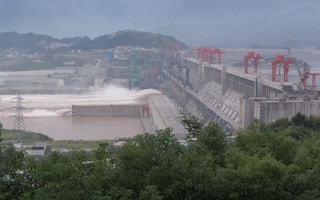This month’s meeting of the Green Climate Fund (GCF) board prompted fresh questions on how far the US$10 billion fund is meeting its promise to invest in innovative ‘paradigm shifting’ programmes to mitigate climate change and tackle its impacts.
A complex and ongoing issue the board faces is whether or not to support hydropower projects, which is particularly relevant since one of the western banks seeking GCF accreditation has invested in such projects in Honduras and Panama.
Hydropower: fuelling controversy
Investing in hydropower is controversial, as was demonstrated at last year’s Paris climate talks when more than 500 civil society groups from 85 countries called on governments and financial institutions to exclude large hydropower from climate initiatives such as the GCF.
The impacts of badly planned large dams on communities and ecosystems are well documented, and have brought them repeatedly under the spotlight. In response, the World Commission on Dams (WCD) in 2000 laid out a new framework to improve planning of large dams in light of water, energy and agriculture policies. The WCD’s guidelines also included approaches to river basin and sectoral planning.
This approach was broadly endorsed by civil society organisations (CSOs) on the basis that it was the only way non-dam options to meet development needs could be properly discussed, and ‘bad dam’ projects could be filtered out at the planning stage. But compliance with the WCD framework requires assessing basin and sectoral planning, as well as individual dam projects – making measuring success very challenging.
Scoring sustainability
Recognising this, the hydropower industry built on WCD ideas by developing theHydropower Sustainability Assessment Protocol (HSAP), with sign-off from CSOs including WWF, the Nature Conservancy, Oxfam and Transparency International in the process.
While some aspects of the tool can be contested, its sustainability scorecard can measure the social and environmental impact of hydropower projects, giving it significant merit. In our view, it is the best tool currently available for measuring the sustainability of individual dams at the planning stage.
Hydro can still play a role
Having said that, many CSOs take the view that changes in renewable technologies and energy storage will make large hydropower dams redundant in the next decade, and will no longer be required, for example, to provide ‘base load’ energy to support grid-connected intermittent renewables, as they often do today.
This may one day be the case, but in the interim period, hydropower continues to play a role in supplying base load power to national grids and balancing other renewables, which allows a greater proportion of wind and solar on the grid. For now at least, it is vital to make the shift needed to lower emission development.
A bid for climate finance for hydro would need to first make the case that it cannot be funded solely by commercial investors or the development banks. If it can make this case, it would then need to meet the requirements of HSAP.
So instead of banning hydro, the GCF should adopt a policy that sets a high bar both on the need for climate finance and on the sustainability standards – and review impacts and performance every 10 years.
“
So instead of banning hydro, the GCF should adopt a policy that sets a high bar both on the need for climate finance and on the sustainability standards.
Tighter policy process, regular reviews
The review would then inform the adoption, or not, of a new GCF policy on hydropower eligibility, based on past evidence and experience for the following 10-year period.
In 2004, the EU made funding for large hydropower in the EU carbon trading system legal on the basis it “respected the provisions of the World Commission on Dams”. Looking back from 2016, we can see that of 1,384 projects financed, 573 were required to meet this condition.
But there is no monitoring, no feedback, and no documentation of that experience that can lead to impact assessment or policy revision – and so no evidence that the policy was effective or ineffective in reducing the impacts of this potentially damaging technology. It would be a pity to repeat the same mistake with GCF.
Jamie Skinner is principal researcher in IIED’s Natural Resources research group. This post is republished from the IIED blog.









